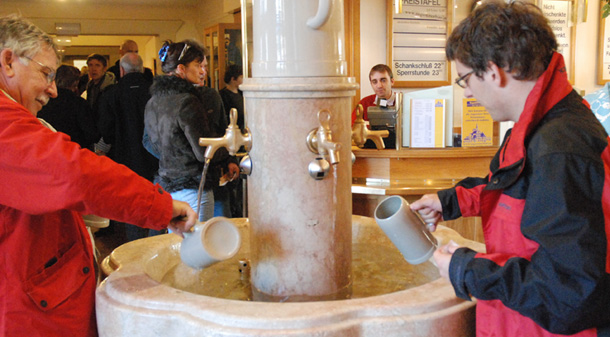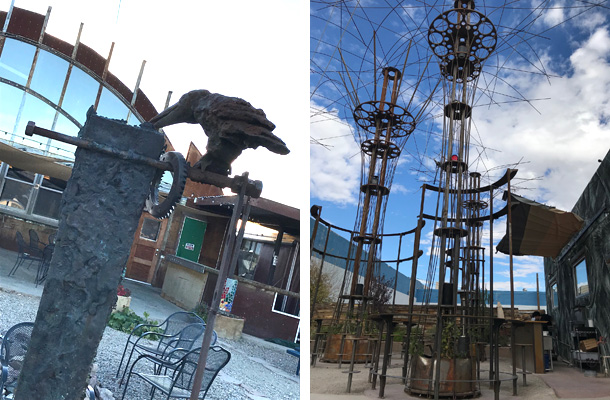

 Host Tom Cizauskas has a rather sad tale to offer for the The Session #134, concluding:
Host Tom Cizauskas has a rather sad tale to offer for the The Session #134, concluding:
“To us, a beer garden has a mythical ethos, like a German outdoor sibling to the coziness of a British pub. But there, that day, the fable seemed extirpated, the expectation denied. Had we been so wrong? Is a beer garden simply a place for beer drinking minus any trappings except for an outdoor setting?
“So, today, we’re enlisting the aid of others. Help vivify our myth.”
Boak & Bailey do just that in a delightful way.
I know there’s nothing mythical about places such as Augustiner Braustubl, the top two photos (in the second customers are rinsing out their mugs before having then filled). There’s something more than nostalgia that draws regular customers to them. They aren’t only tourist attractions.
But do they need to conform to a model that been around for centuries? I don’t have an answer. The same German immigrants who made America a beer drinking country in the 19th century also established a beer garden culture that was more meaningful than many realize. Granted, not all where as expansive as Schaider’s Beer Garden in St. Louis, but is is fun to imagine drinking there.
Schnaider’s Beer Garden became a nationally known venue. Bands, theater groups, and travelling shows performed nightly during the summer months. According to the book St. Louis Brews, Schnaider even created his own light opera company to compete with a local baseball team, the St. Louis Brown Stockings. The success of the Brown Stockings (later to be known as the Cardinals) was drawing patrons away from his beer garden and eroding his profits. It’s also believed that some of the musical groups that played Schnaider’s would eventually combine to form the St. Louis Symphony Orchestra. To promote Schnaider’s, schedules, advertisements, and reviews for performances such as “The Pirates of Penzance” and “The Beggar Student”, were published daily in local newspapers.
But back to what we expect from, or in, a 21st century beer garden. Is it about more than being outdoors? What would the necessary trappings be? The necessary beers? Lagers and hefeweizens or juicy pale ales and fruited goses? (I will stop before asking if serving gose makes a beer garden German.)
None of these is absolutely essential, although outdoors seems pretty important. But not even hefeweizen makes a difference if what somebody calls a beer garden is not a welcoming gathering spot. That’s the something beyond an outdoor setting that makes or breaks the deal. These two photos taken in New Mexico in November are not the best example. For one thing, there are no people in them. The one on the left is from Taos Mesa Brewing, set in the high desert, and the one on the right is Dialogue Brewing, in more urban Albuquerque. They reflect their environment.
Change is constant. Beer may glitter in the sunshine in a different way. But beer garden gemütlichkeit should still be gemütlichkeit.
